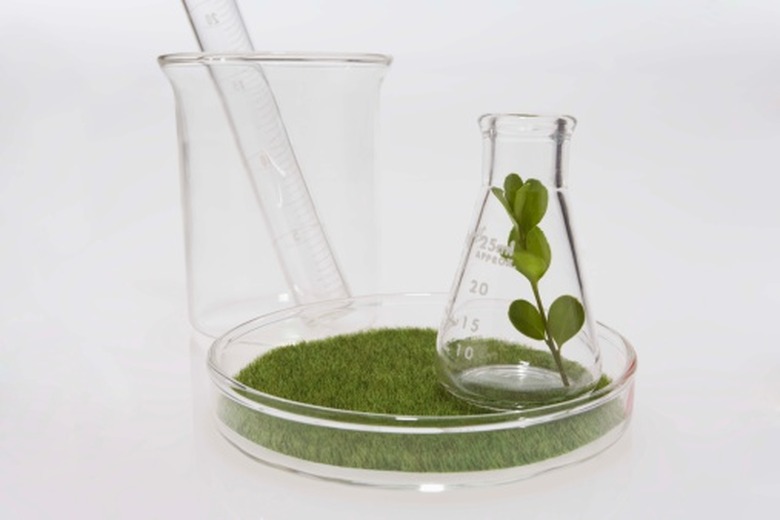How Do Plant Cells Grow?
Plants grow when the cells contained within them grow. This happens in one of two ways: The cells physically increase in size, or they divide and copy themselves. The processes of division and differentiation are both complex ones that allow cells to carry out the processes vital to the plant's health.
Cell Expansion
Cell Expansion
Cell expansion occurs when an individual cell increases in size. The cell wall, the outermost part of the cell, holds everything together. When the cell expands, it can grow only as far as the cell wall stretches in order to keep the stability of the structures within. Not all plant cells expand in the same way; this type of growth is most commonly found in the roots and the tips of the plant's stems. It is generally believed that the expansion of cells occurs at a somewhat erratic pace, involving a change in the texture and strength of the wall and a period of expansion when the wall is at its weakest.
Cell Differentiation
Cell Differentiation
Plant cells also grow by a process called cell differentiation. All plant cells contain the same basic information and programming. As the plant matures, the cells in its roots begin to develop differently than the cells in the stem or leaves. All cells have the potential to serve in every capacity, and when exposed to different needs, the cells begin to express different characteristics.
Cells in the roots begin to reach toward nearby water and nutrients and form hair-like growths that allow them to absorb the nearby nutrients. Some of the most basic plant structures are those used for moving water to different parts of the plant. Xylem and phloem are tubes made up of dead cells, which more easily conduct water to the other parts of the plant.
Cell Division
Cell Division
Cell division, or mitosis, is the process by which cells replicate and grow in number. Proteins join to the information contained in the plant's DNA and begin to separate the chromosome to copies of everything contained within the structure of the cell. When there are two copies, the cell wall will divide the two cells. These daughter cells are identical to the original cell, and each contains half of the final number of chomosomes, called chromatids. The growth process is complete only when each chromatid produces the other half of itself, becoming a full chromosome.
Vital Nutrients
Vital Nutrients
Plants require a number of things to survive, including water, nitrogen, potassium, sunlight and phosphorus. Water and phosphorus are the elements that aid mainly in cell expansion, for when taken into the cell, they help press the cell walls leading to expansion.
Phosphorus is also key in promoting cell growth in the processes of division and differentiation. It supplies the plant with energy needed to run various processes, including division and differentiation. Without phosphorus, there would be no fuel for replicating the contents of the cell or developing the specialized structures contained within. The other nutrients are less responsible for plant growth and more directly related to processes within plants such as the conversion of light to energy usable by the plant.
Cite This Article
MLA
Durkee, Debra. "How Do Plant Cells Grow?" sciencing.com, https://www.sciencing.com/how-do-plant-cells-grow-12511951/. 21 July 2017.
APA
Durkee, Debra. (2017, July 21). How Do Plant Cells Grow?. sciencing.com. Retrieved from https://www.sciencing.com/how-do-plant-cells-grow-12511951/
Chicago
Durkee, Debra. How Do Plant Cells Grow? last modified March 24, 2022. https://www.sciencing.com/how-do-plant-cells-grow-12511951/




